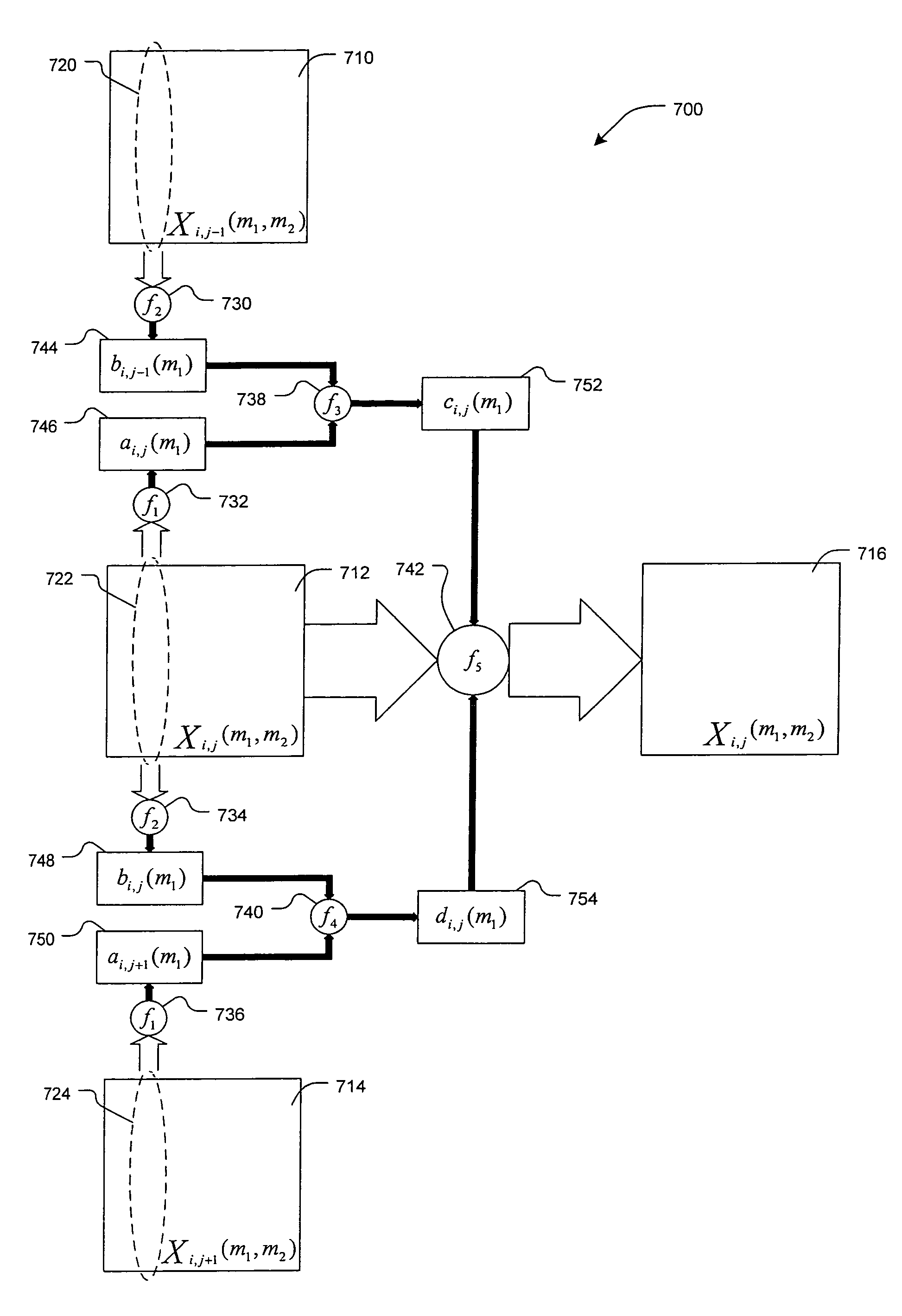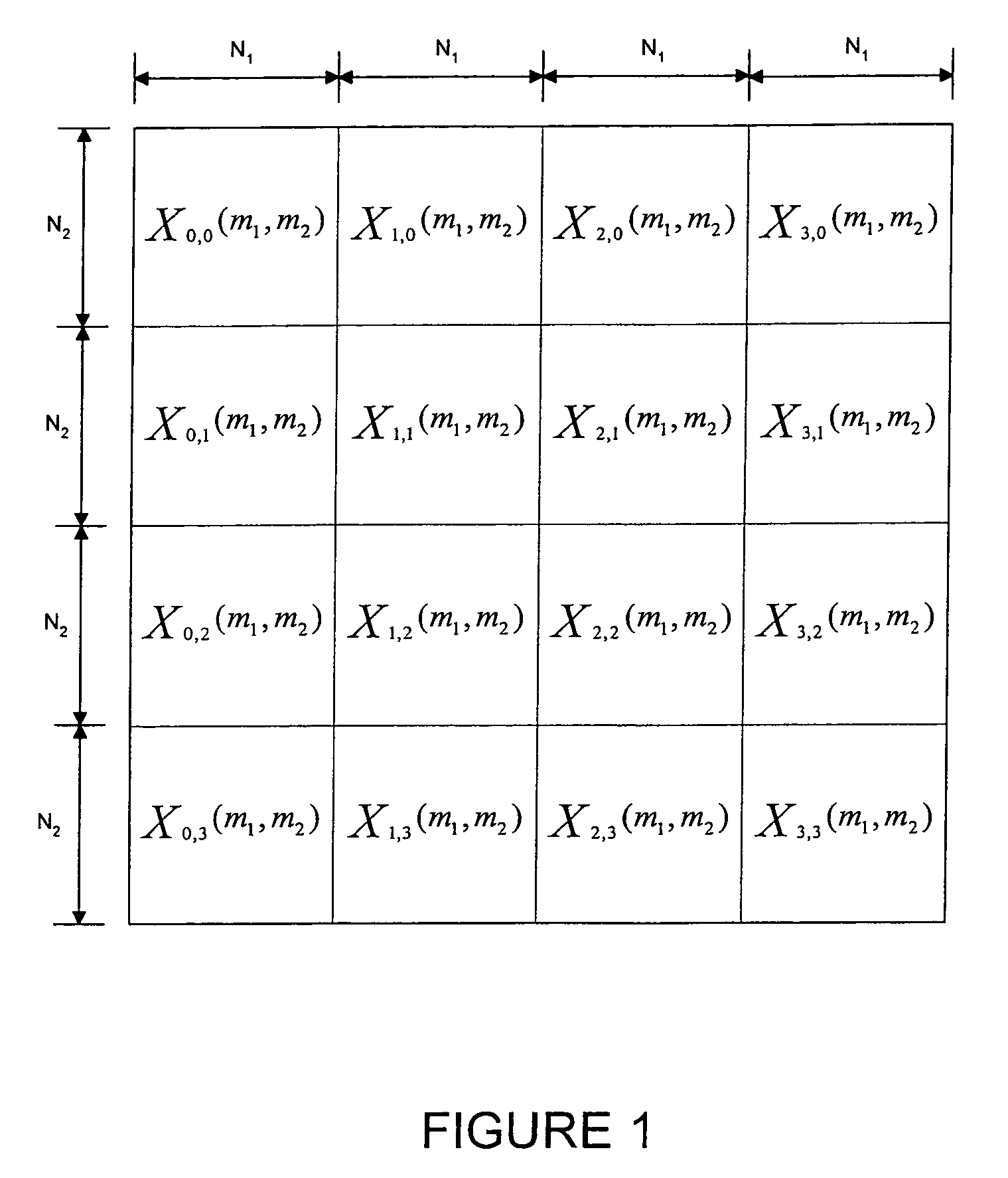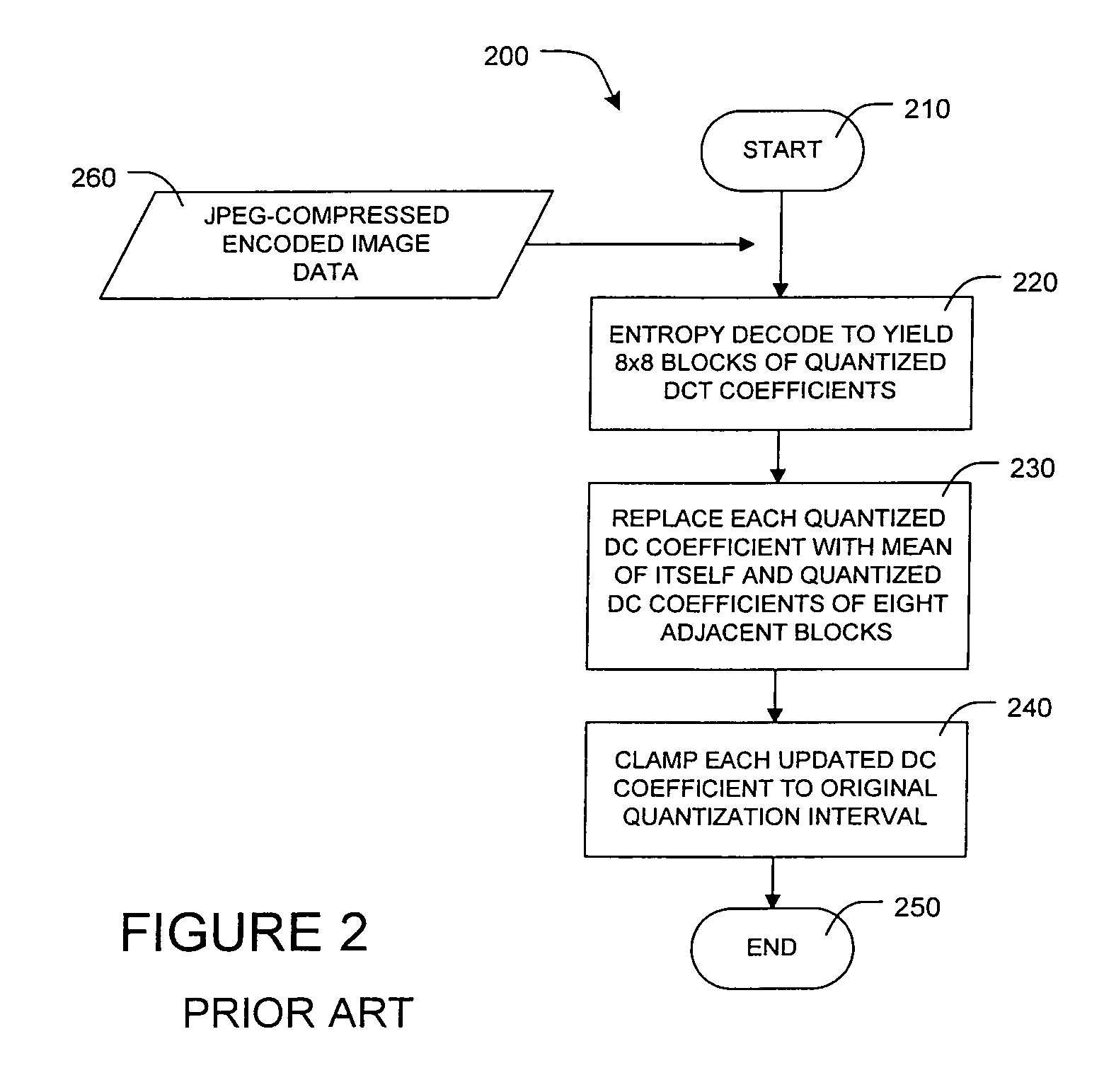Methods and apparatus for improving quality of block-transform coded images
a block-transform and image technology, applied in the field of image processing methods, can solve the problems of significant disparities between decoded blocks, the visibility of annoying artifacts and distortions increases, and the limitation of how much compression is possible without artifacts becoming too annoying, so as to improve the quality of an image encoded, reduce the effect of block-transform image coding artifacts, and improve the quality of each scan of a progressively encoded imag
- Summary
- Abstract
- Description
- Claims
- Application Information
AI Technical Summary
Benefits of technology
Problems solved by technology
Method used
Image
Examples
Embodiment Construction
[0055]FIG. 1 illustrates the partitioning of image data into nonoverlapping blocks of transform coefficients of size N1×N2, where the block located at offset i,j includes the transform coefficients Xi,j(m1,m2), m1=0,1, . . . , N1−1, m2=0,1, . . . , N2−1. These could be DCT coefficients that resulted from the entropy decoding of a JPEG encoded image, for example, or they could have been created from the computation of a two-dimensional forward DCT applied to each corresponding block of an already decoded and reconstructed image. N1 and N2 may take any values, but are typically both equal to 8 for the block-DCT coding schemes. If the coefficients had been quantized, then the image reconstructed from these coefficients will contain artifacts, with the degree of artifacts directly related to the degree of quantization. The image will also exhibit artifacts resulting from the independent processing of the blocks.
[0056]One feature of the present invention is to directly improve the qualit...
PUM
 Login to View More
Login to View More Abstract
Description
Claims
Application Information
 Login to View More
Login to View More - R&D
- Intellectual Property
- Life Sciences
- Materials
- Tech Scout
- Unparalleled Data Quality
- Higher Quality Content
- 60% Fewer Hallucinations
Browse by: Latest US Patents, China's latest patents, Technical Efficacy Thesaurus, Application Domain, Technology Topic, Popular Technical Reports.
© 2025 PatSnap. All rights reserved.Legal|Privacy policy|Modern Slavery Act Transparency Statement|Sitemap|About US| Contact US: help@patsnap.com



